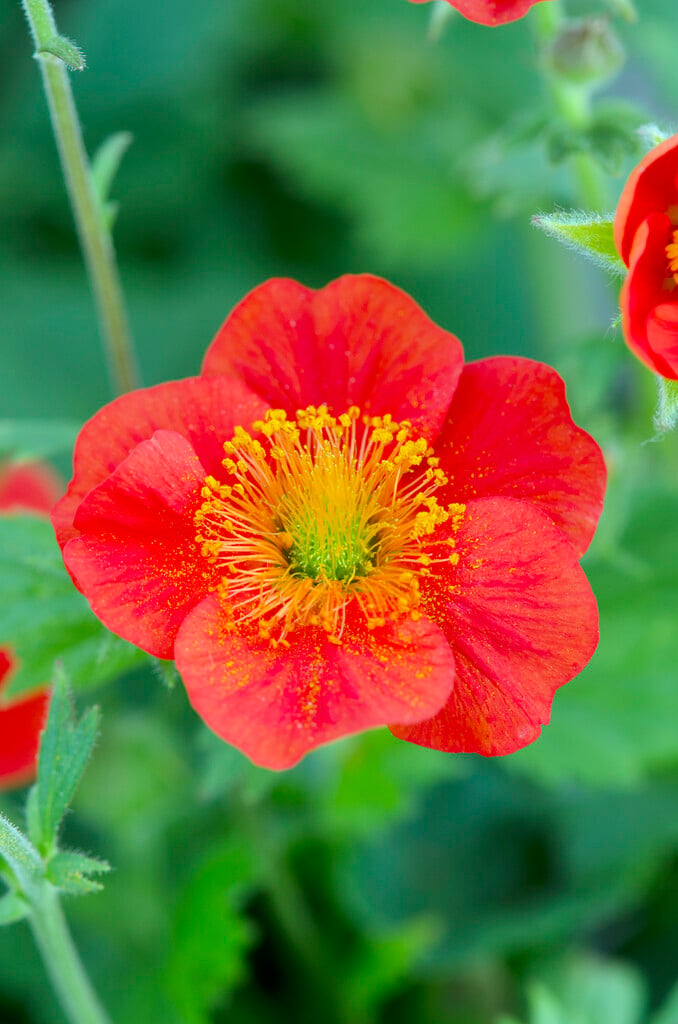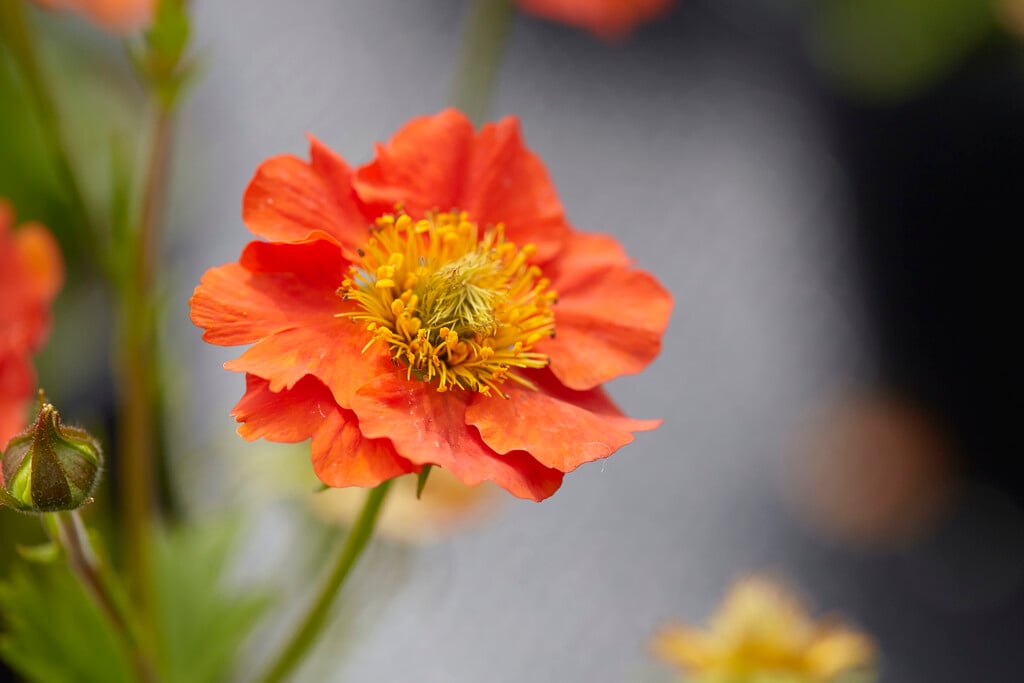Size
Ultimate height
0.1–0.5 metresTime to ultimate height
2–5 yearsUltimate spread
0.1–0.5 metresGrowing conditions
Moisture
Moist but well–drained, Well–drainedpH
Acid, Alkaline, NeutralColour & scent
| Stem | Flower | Foliage | Fruit | |
| Spring | Orange Red | Green | ||
|---|---|---|---|---|
| Summer | Orange Red | Green | ||
| Autumn | Green | |||
| Winter |
Position
- Full sun
- Partial shade
Aspect
West–facing or South–facing
Exposure
Exposed or Sheltered Hardiness
H7Botanical details
- Family
- Rosaceae
- Native to GB / Ireland
- No
- Foliage
- Deciduous
- Habit
- Clump forming
- Genus
Geum are rhizomatous perennials, occasionally spreading by stolons, with a basal rosette of pinnately lobed leaves and saucer-shaped flowers in loose clusters
- Name status
Accepted
How to grow
Cultivation
Thrives in fertile, well-drained soil in full sun; will tolerate light shade but flowering is better in sun. Avoid areas that are waterlogged over winter
Propagation
Propagate by division in autumn or spring
Suggested planting locations and garden types
- City and courtyard gardens
- Cottage and informal garden
- Patio and container plants
- Rock garden
- Wildlife gardens
- Garden edging
Pruning
Deadhead to encourage more flowers
Pests
May be susceptible to geum sawfly
Diseases
May be susceptible to downy mildews
Love gardening
Sign up to receive regular gardening tips, inspiration, offers and more
View our Privacy Policy
Get involved
The Royal Horticultural Society is the UK’s leading gardening charity. We aim to enrich everyone’s life through plants, and make the UK a greener and more beautiful place.

